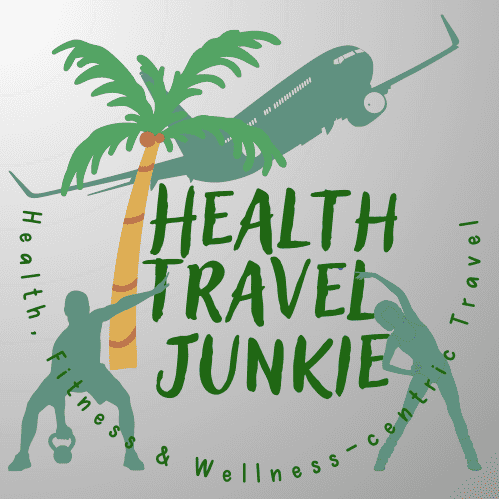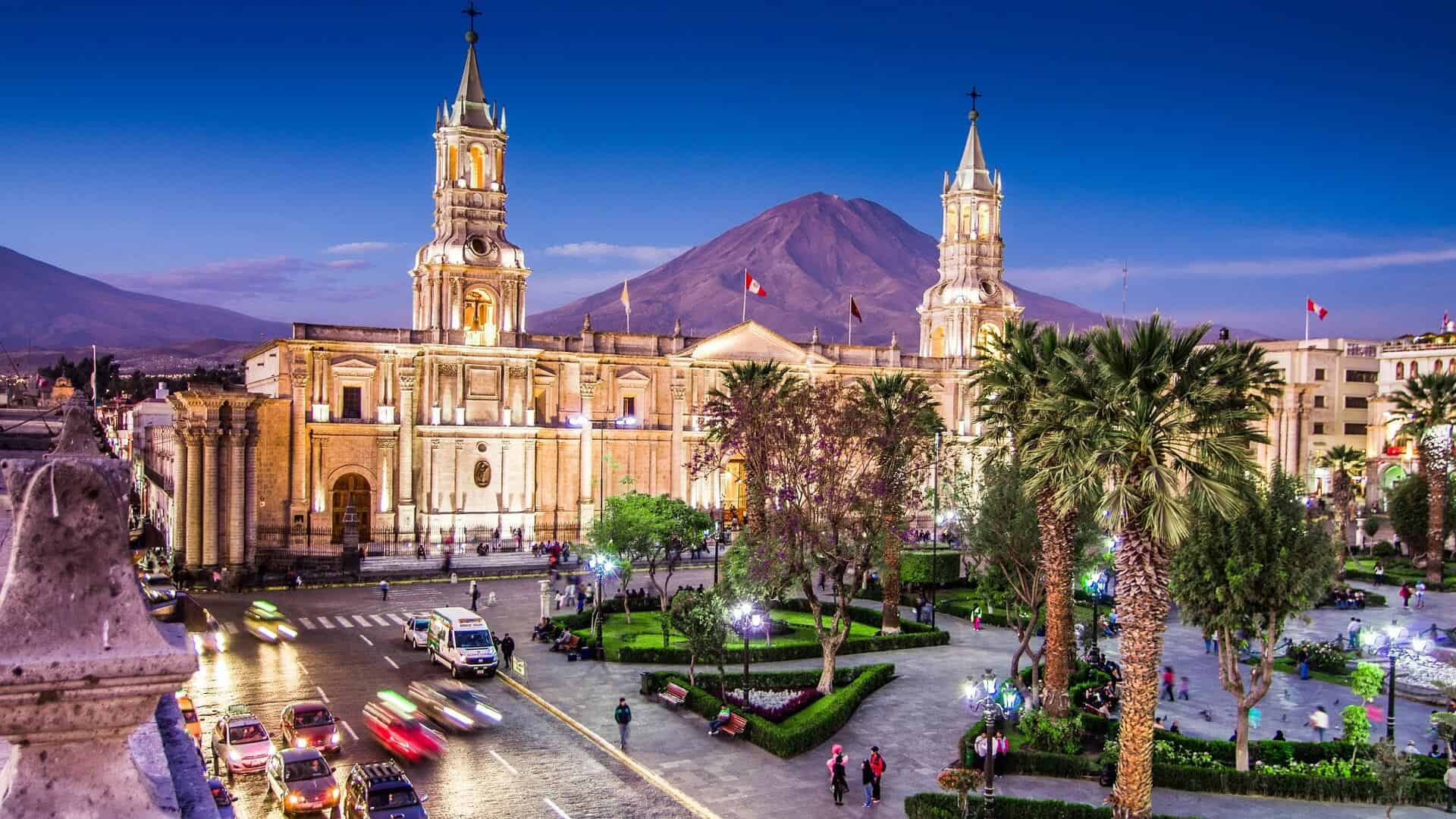Arequipa (abbreviated “AQP”) is Peru’s second largest city. However, it’s less popular for tourism than Cusco and Lima. The main tourist activity is to see the Colca Canyon. Otherwise, for hardcore adventurers, hike up Misty Volcano. Or try white water rafting. Arequipa is a great “base camp” for physically challenging activities.
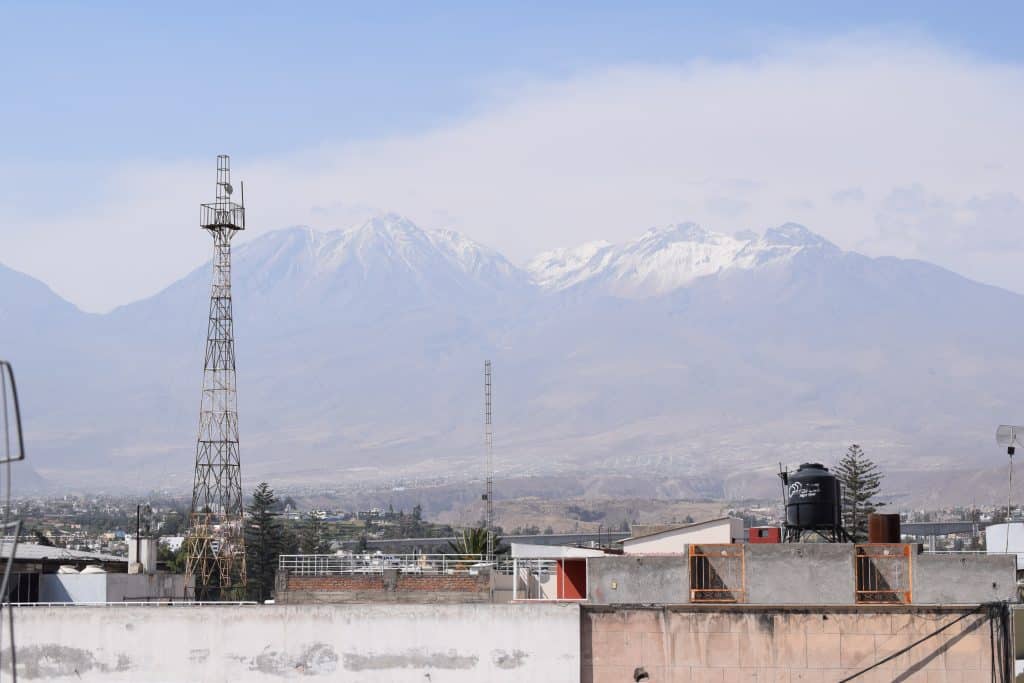
Contents
Colca Canyon Trek
There is the option of simply driving to the Colca Canyon, taking some photos and driving back later in the day. However this option seemed to be a pain in the ass – 7 hours on a bus (3.5 hours there and then back again) in one day. The more interactive option is to go trekking in the canyon and stay overnight. The definition of Trekking is a hike that lasts longer than one day.
So leave your heavy bags for a day or two in your hotel/hostel storage room, consult a packing list and only take the most necessary items with you, e.g. hiking shoes, comfortable socks, spare clothes, phone power bank, and toiletries.
Early Morning Bus Ride
I wake up at 2h30am, and at 3am the tour company picks me up at my hostel. You’re supposed to get 8 hours of sleep, but who is going to go to bed at 6h30pm the previous night? Thus almost everybody would be sleep deprived at this point. The idea is that you should sleep on the bus, but it is not the most comfortable minibus. You’ll be lucky if you get as much as 30 minutes of sleep. So, half asleep you arrive at the Colca Canyon.
We eat a small breakfast first, and then we’re off to the starting point of the hike. Here you can buy last-minute supplies, e.g. a hat for the sun, extra sunscreen, water or a snack. I buy a large army hat (“sombrero”) which was probably my most valuable piece of clothing since I completed the desert hike without any sunburn. At first, it’s all fun and jokes.
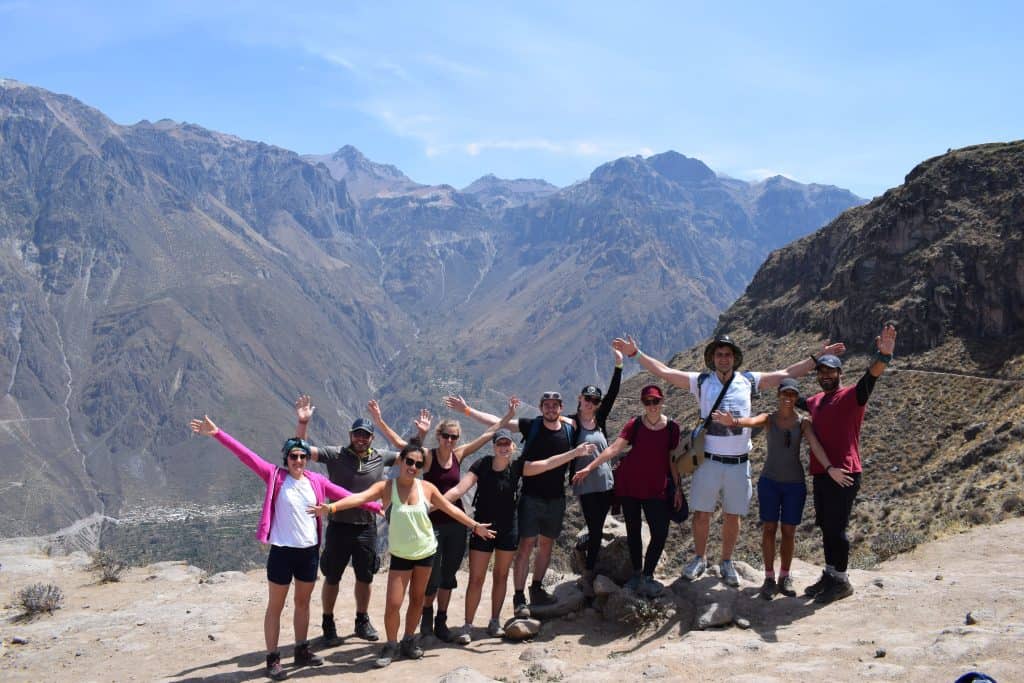
Then we get ready, the hike must begin.
Colca Trek Begins
We descend the Colca Canyon. The first hour is easy, but at some point the continuous descending of the canyon becomes monotonous. The monotony eventually becomes fatigue and knee pain sets in. The knee pain is due to walking downwards on a steep slope in a short time-frame. It’s still tolerable though and at first barely noticeable. We simply go through the motions and keep on descending. At the bottom of the canyon, we rest for 20 minutes. Next, we walk along the bridge while crossing the river.
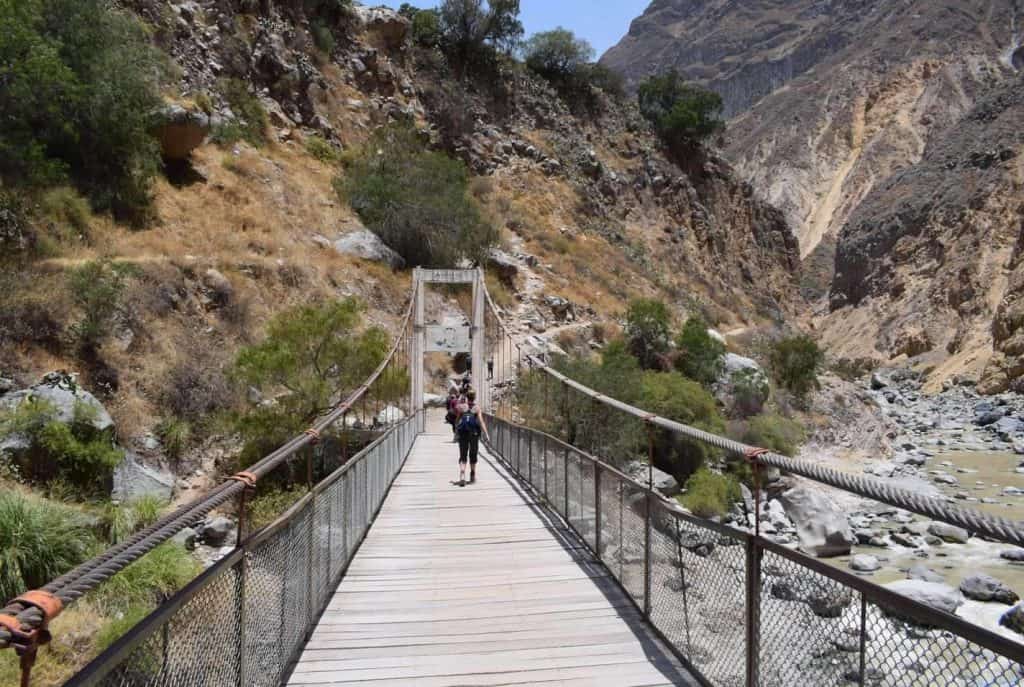
First Incline
Now a steep incline awaits. It’s maybe only 15 minutes of incline but we realize the real hike is about to begin. It’s not all downhill anymore. After walking for about 40 minutes we find a restaurant. Here we get soup, rice, some vegetables and a few tiny pieces of alpaca meat. We can rest for an hour or so…
The thing that keeps you going is you don’t really know how far you’re going to hike. The mindset is: Let’s simply complete this section of the hike and you’ll be at your lodge soon, resting, chilling and catching up last night’s sleep. Luckily you forget how little sleep you got last night once physical exhaustion sets in. Physical exhaustion overrides mental exhaustion.
The Valley Where Time Stood Still
After the light lunch, we keep on walking. At this point, the territory changed from desert to lush green landscapes next to the river. It is fascinating seeing the locals live away from civilization in the canyon itself. No roads connect them to the outside world. Except for the hiking trails they are well accustomed to. Their lives seem to be self-sustaining, through fruit trees like avocados, small vegetable gardens, caged or roped animals providing meat, dairy and eggs, etc.
The next stretch consists of both short uphill and downhill footpaths. The guide, Marco, shares some of his knowledge of the local plants, as well as the fascinating Cochineal insects, a parasite that feeds of a certain type of Cactus. This insect is used as a red food and clothing dye.

Descending the Colca Canyon
There is one last uphill climb before we undertake a very long descent into the pit of the canyon to a place called “The oasis”. This is a luscious green spot next to a waterfall originating from deep underneath the Colca mountain. Walking down the canyon one last time was tough. While descending, my right knee was slightly locking. I couldn’t bend the knee anymore except maybe for an radius of 10cm. So I simply swing-dragged my leg down the canyon.
Throughout this descent, there were times when I doubted if I’d make it back up alive. This particular day’s hike was 14 km’s in total. It pushes what you believe to be your physical limits. I also got some nasty scratches on the back of my heel from my running shoes (which substituted as hiking shoes). I was the only one wearing cut-off socks instead of full-length hiking socks. However what I’ve learned is that when your physical survival is at stake, your mind simply overrides any pain you feel. There are no doctors in this canyon. They cannot fly you out with a helicopter if you break your leg. So whatever pain you feel you simply push through because it’s the only option. You forget everything else, and getting out alive becomes the only thing worth thinking about.
Some would say you should ascend first, do the difficult part, and then descend the next day. But the real test of your strength is to throw yourself into a deep pit, the second deepest in the world, namely the Colca Canyon, and then drag yourself out again, whatever it takes. Sitting here the next day my legs are sorer than it’s ever been. I’ve done many half-marathons, but none has been as challenging as hiking down and up the Colca Canyon, which coincidentally was also 21km’s in total.
The Oasis
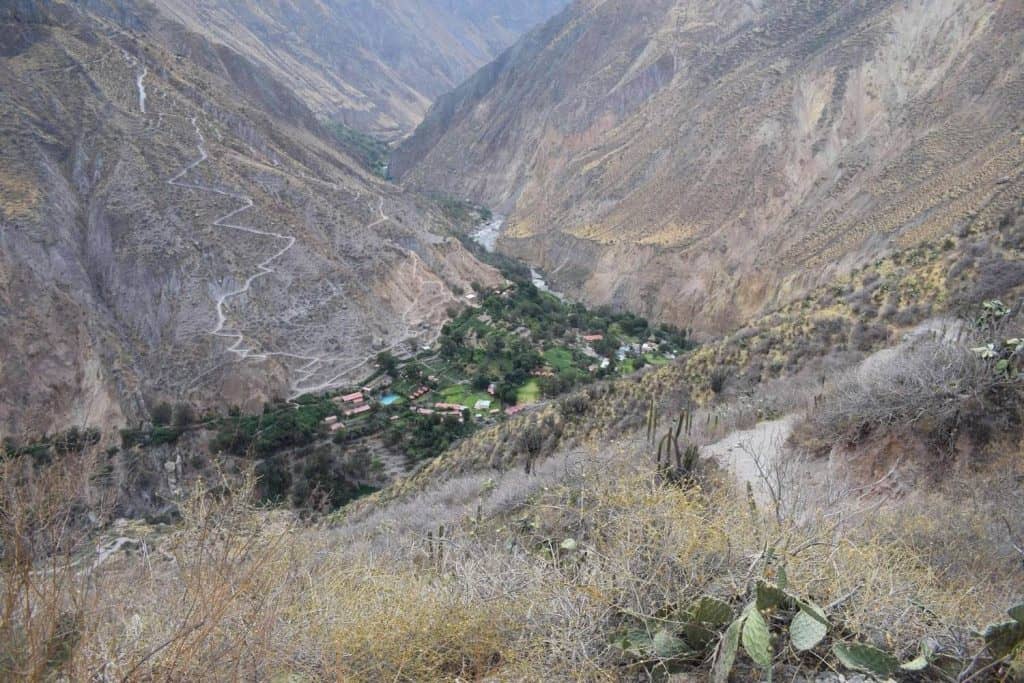
After descending the last hill we cross the river once again and head to the oasis. About 30 minutes later we arrive at the paradise in the Colca desert. Here is a swimming pool, showers, and most importantly a bed. I immediately crash on the bed, and sleep for an hour and a half before heading out for dinner. At dinner everybody is too tired to talk. On our minds was the insane ascend the next day, as well as the fatigue from today. We get pasta and soup. Pasta of course good for carbo-loading for tomorrow’s hike.
The next day we were going to do a 1200 meter high continuous ascend of 7km’s to the top of the Colca canyon. Think of it like climbing stairs for 7km’s. Definitely an intense leg workout. At this point you’re already regretting not physically training for this trek like you would train for Ironman, an Obstacle Course Race, or a Marathon.
There are about 10 people doing the uphill climb in my group, most of them early 20’s. Although I never feel age should hold you back, I was the oldest guy doing this hike that day. We become complacent about our fitness as we grow older. We hold ourselves to less and less strict standards than we do when younger. If I jogged at a pace of 6 minutes per km when I was 20, I would tell myself I’m unfit, while now I don’t care. I would feel it’s “fit enough”. It’s the “fit enough” feeling that you should fight as you get older.
While ascending the Colca, I became grateful for every workout I did in the month preceding the hike. For example right before I flew to Peru, I was outrun by a 20-year-old jogger in my hometown of Stellenbosch, South Africa. But I tried to keep up nevertheless. It is these workouts that keep you strong – when you pace yourself against 20 year old’s instead of those in their 30’s.
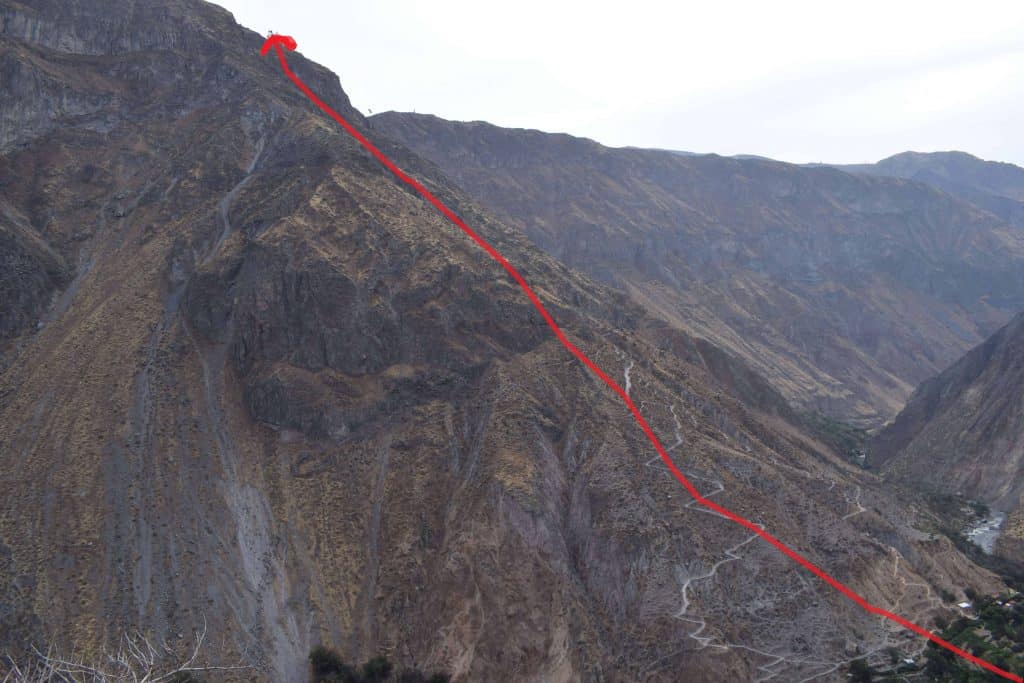
And so we go to bed after dinner. Everyone’s exhausted. It’s only 8 pm but I fall asleep immediately.
The Ascent
4 am I wake up. The hike begins in the darkness at 4h30am. Suns out at 5 am though. What a brilliant idea to hike in the morning when the air is still cool. If you start this hike at noon, you’d get roasted by the sun.
The first hour was so-so… Legs tired and sore from yesterday, but I had a lot of energy initially. The second hour I had to start taking short water breaks. I would tell myself that every few meters I ascend brings me closer to my goal, and if I make it, I would never have to walk those meters again. I was testing my physical boundaries. When the tour-guide, Marco, saw any one of us struggling he would yell “you can do it!!” and we would believe him.
During the second hour, your strides get shorter and shorter, and you start dragging your legs uphill, while at first, your legs would drag you up instead. After taking a few short breaks, I would briefly get strength again and burst up a few steps that I’d never have to take again. At some point, I realized I passed the halfway mark. So I simply kept going. I knew that sooner rather than later there’d only be one hour left, and then only half hour, only 15 minutes, etc…. And this is what happened. With my legs keeping on moving forward, after 3 hours I reached the top. It was a great relief.
At The Top
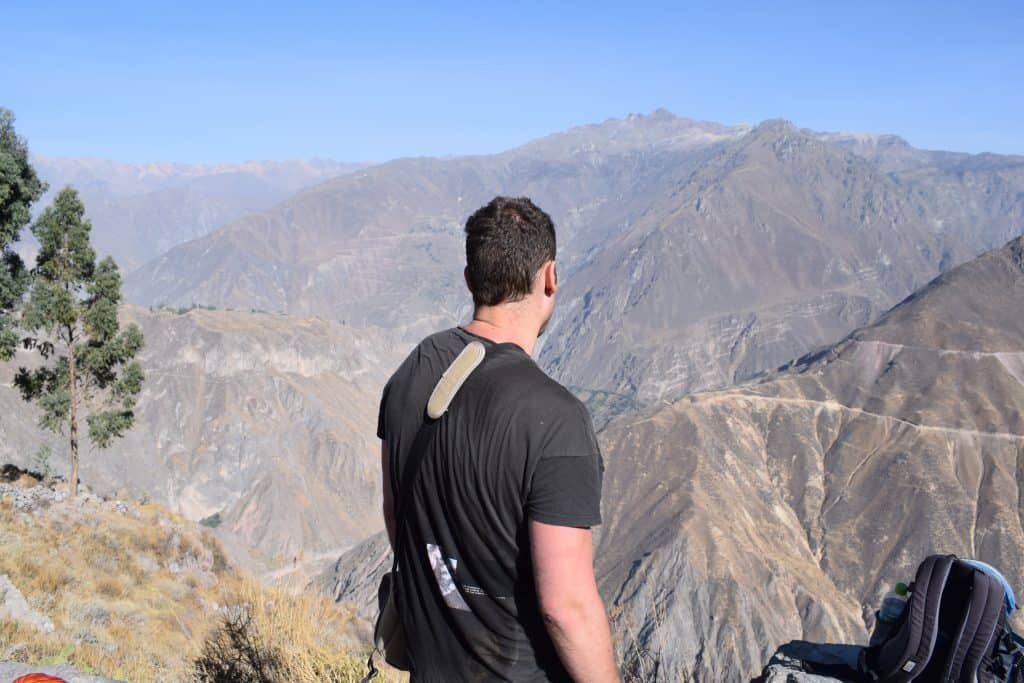
We went on to eat breakfast, everybody in a better mood now, more talkative and relaxed. However, the highlight of the second day was the buffet restaurant in Chivay. We were half-starved and tired while scooping up 3 plates of Peruvian food, including Alpaca meat, trout and vegetarian options. After lunch, we spent an hour chilling in the hot springs – a great way to relax sore muscles. In the end, this trip was well worth the cost of 110 soles (not including the entrance fee to the canyon of 70 Soles, the hot springs entrance of 15 soles, and the cost of the optional buffet, 30 soles).
Central Arequipa
In Arequipa, the best health-centric sight to see is the San Camillo Market. Here you’ll find all the Peruvian exotic fruits, herbs, and powders. Along with exotic fruit smoothies, and some meat options. There’s not anywhere better to go to sample the local health-centric foods and fruits, such as Noni (a fruit tasting like a fusion of Black pepper and aged cheese), Sankayo (a sour fruit resembling the dragon-fruit, but tasting completely different), Lucuma, Guanabana, Nopal Cactus Juice, and much more.
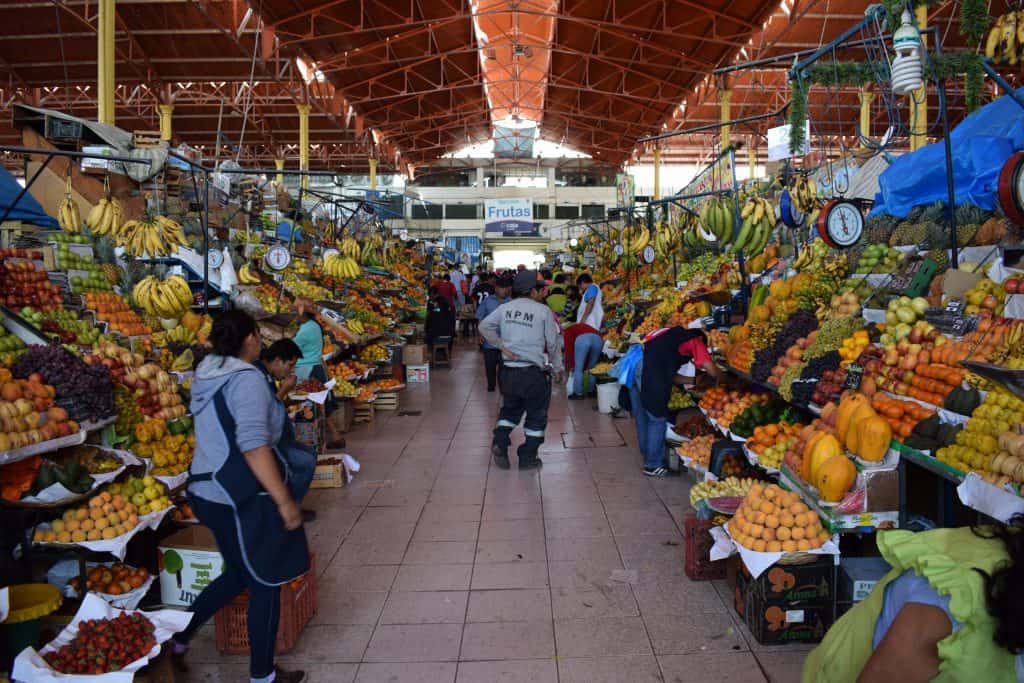
Arequipa Restaurants
When it comes to vegan/vegetarian restaurants, I used the Happycow app and couldn’t find great choice in Arequipa. It’s a nice place to make your own food instead. If you want to explore, you could try Las Gringas restaurant with pizza’s and vegetarian sandwiches such as below. Moreover, there’s a vegan sushi restaurant (El Buda Profano). While Omphalos has a decent vegan meal for about 12 soles. Other similar restaurants are barely worth mentioning.
In addition, for budget travelers, there are Chifa restaurants around the Plaza de Armas (fusion of Peruvian and Chinese food). Some of these have healthier options with a lot of vegetables and using brown rice (“Arroz Chaufa”) instead of white rice. Furthermore, the same area has more expensive, touristic restaurants as well.

Fitness in Arequipa
If you’re looking for a gym, OneFitness lets you work-out for 10 soles (about $3.50), while down this road (Emmel rd) there’s another smaller gym (“Club gym”) that charges 7 soles. If you’re doing the Colca trek it will be highly beneficial to do some jogging in the week preceding your hike.
Arequipay Backpackers
This is a really nice hostel I spent some time in while visiting Arequipa. The other hostels tend to be party hostels. But this one is better to use as a base for adventure activities like hiking the Colca Canyon.
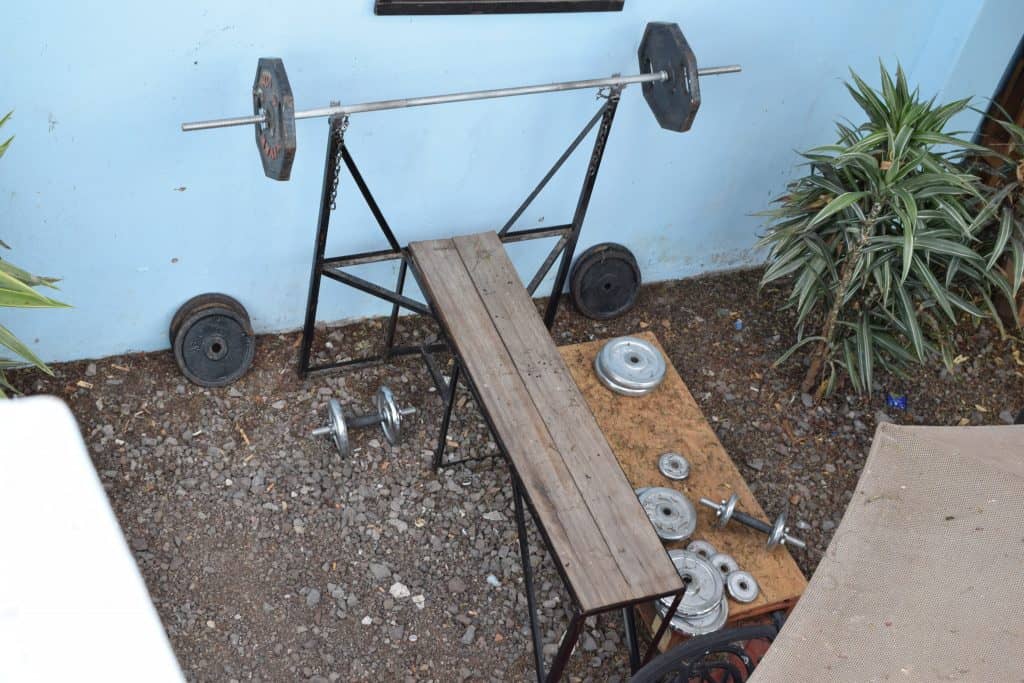
At Arequipay Backpackers you can do a full body workout with very basic and minimal gym equipment (in photo above). Let me explain below.
Workout Suggestion
- For the chest do Bench press.
- For shoulders use the barbell for the overhead press while standing.
- For your back, one option is to put one knee on the bench, and one foot on the ground next to the bench, then row the dumbbell up and down vertically (dumbbell rows). Alternate between your arms and try to do 3 sets each arm of about 15 reps.
- For your arms, do bicep curls with the loose dumbbells, or with the barbells. Also do tricep extensions while putting one knee on the bench (extend the arms backwards). Another option is to sit on the bench, arms above your head, then extend the triceps upwards, and back down, with a weight in your hand. You can also use the barbell, and extend it overhead. The last tricep option is to do dips next to the bench. Put your hands on the bench, while lowering yourself down, and back up. This is an easy form of dips since you support your body-weight with your feet.
- For your abs, lie on your back on the bench, then lift up your feet and legs in the air to do crunches. Or otherwise let the motion be in your upper body, and do sit-ups on the bench.
- For the legs, there are many different exercises to try. Do deadlifts with the barbell. Then full standing squats also with the barbell. Also, try reverse lunges with a dumbbell in each hand. Then Bulgarian split squats with one foot on the bench while lunging forward, a weight in each hand. Don’t forget pistol squats.
If you are not sure about the exact posture for any of these exercises, do not hesitate to look it up online.
Arequipa Smoothie Recipe
For an interesting smoothie using Arequipa ingredients, buy Nopal Cactus juice at San Camillo market, as well as Lucuma, Guanabana, and Mango. If you use the right mix of these ingredients, you’ll get an awesome smoothie that tastes better than real dairy custard. You can add a sweetener like Honey or Agave if you want. Be sure to remove the black seeds of the Guanabana – you don’t want these to end up in your smoothie.
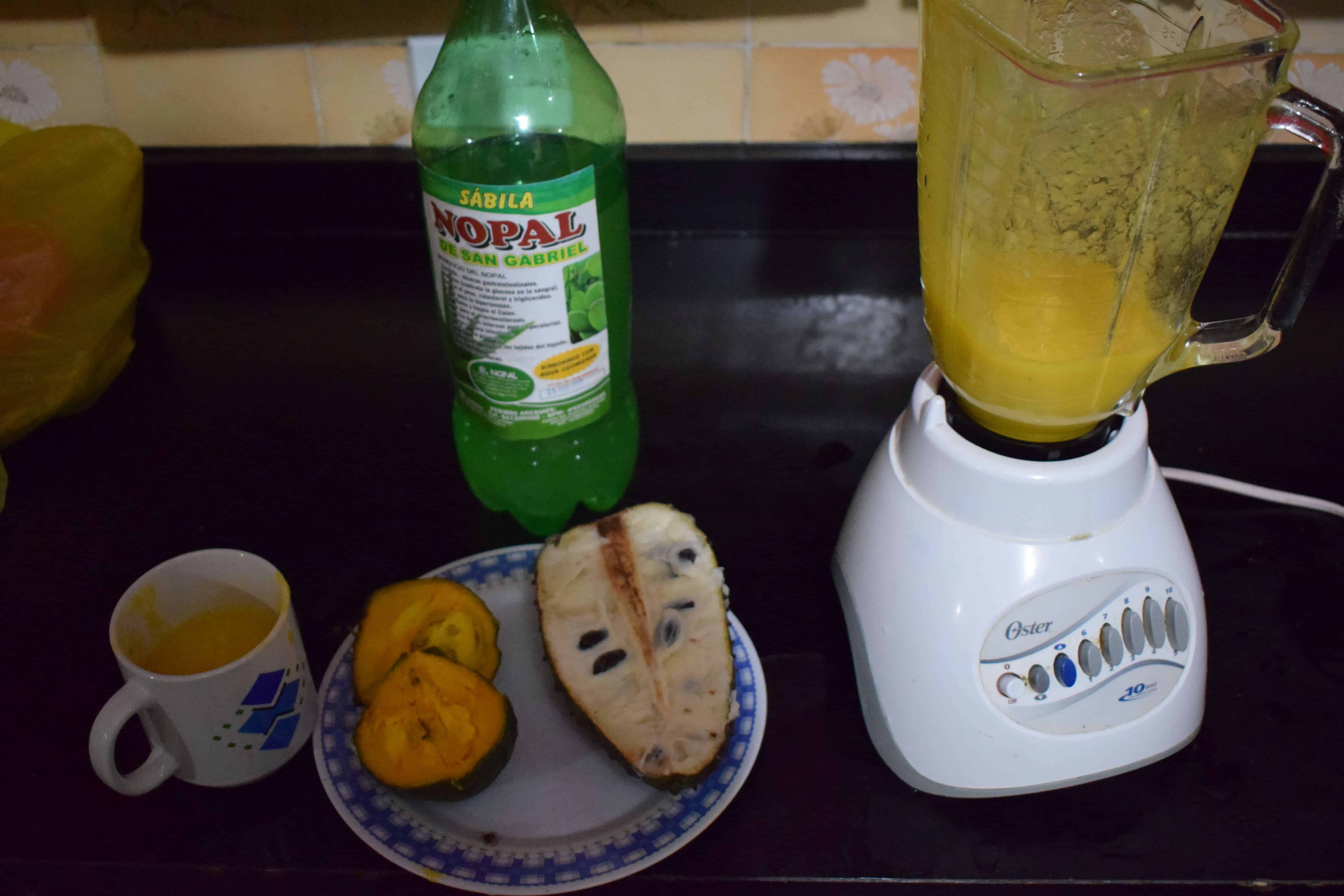
Arequipa Health Travel Junkie challenge
The Health Travel Junkie Challenge for Arequipa is to hike the Colca Canyon. To make it easier on yourself, do some training before-hand such as jogging or running treadmill with the incline setting.
Health Travel Junkie Scale
Fitness activities – 9
Food – 7.5
Cost of traveling – 9
Other Wellness-related activities – 8.5
Overall rating: 85%
What do you think about wellness in Arequipa? Would you like to hike the Colca Canyon? If you have further tips or questions for travelers, comment below!
